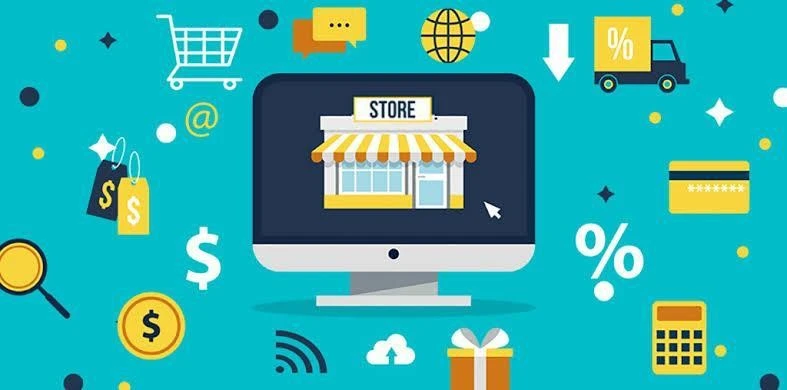Explore the Future of E-commerce in Pakistan as online shopping transforms the retail landscape. Driven by rising internet adoption, smartphone penetration, and a young tech-savvy population, e-commerce brings convenience, accessibility, and more choices to Pakistani shoppers.
The retail landscape in Pakistan is undergoing a significant transformation, driven by the rapid growth of e-commerce. With the increasing internet penetration, affordability of smartphones, and a young, tech-savvy population, the country is poised for a digital retail revolution.
The Current State of E-commerce in Pakistan
Pakistan’s e-commerce sector has been focusing mainly on consumer products and accessories. The country is the 36th largest market for e-commerce, with a revenue of $8,085.1 million predicted by 2023. The e-commerce market in Pakistan has experienced a commendable growth rate of 30-35% over the last three years. The number of 3G and 4G users in Pakistan reached 124.1 million by the end of February 2023, and the mobile banking sector shows promise. The number of online shoppers is expected to reach 100 million by 2025.

The Boom of E-Commerce in Pakistan
Pakistan’s e-commerce sector has witnessed remarkable growth recently. The market is projected to expand at a CAGR of 11.82% from 2024-2027, reaching a volume of $18.26 billion by 2027. Key factors propelling this boom include:
- Increasing internet subscribers – over 129 million broadband users now
- Rapid smartphone adoption – over 124 million 3G/4G subscribers
- A young, digital-native demographic
- Rising consumer demand for online shopping
Leading e-commerce platforms like Daraz, Yayvo, HumMart and large retail chains are tapping this potential by enhancing online capabilities. For a deeper understanding of the intersection between e-commerce and social media, check out E-commerce and Social Media in Pakistan: How They’re Changing Consumerism.
Impact on Shopping Behavior
E-commerce is fundamentally changing how Pakistanis shop today. 68% of the online population has started shopping online in the last 3 years. Consumers now proactively research products online before purchases – 39% research electronics and 53% research clothing online.
The convenience of marketplace models, payment innovations like mobile wallets and expanding logistics are encouraging consumers to transact online. Price and after-sales service comparisons have made shoppers more value-conscious.
Social commerce and influencer marketing on platforms like Facebook and Instagram also sway purchase decisions, especially for youth. To delve deeper into the impact of mobile commerce in Pakistan, don’t miss The Impact of Mobile Commerce in Pakistan: A New Shopping Era.
Consumer Behavior and Preferences
Online shoppers in Pakistan have varying preferences regarding online research and purchases, depending on the product category they consider buying. Consumers in Pakistan prefer to research a variety of products online, but they tend to buy these products on the internet less often. The most pronounced category in that regard is Consumer Electronics, where 39% of respondents said they like to conduct online searches for this category, but only 21% said they buy it online. Product categories that are bought online at relatively high percentages are still researched more. This goes for Clothing with a research to purchase ratio of 53% to 46%, as much as it is for Bags & Accessories (54% to 49%), and Shoes (47% to 35%).
Challenges and Opportunities
Despite the promising growth, the e-commerce sector in Pakistan faces several challenges. The lack of trust in online sellers, largely stemming from instances of fraudulent activities, is a significant barrier. Additionally, disparities in internet connectivity and infrastructure inadequacies in rural regions further limit the reach of e-commerce. However, these challenges also present opportunities for growth and innovation. The e-commerce industry’s growth will create new jobs and opportunities, and it will help to boost the country’s exports. Major players such as Amazon and Alibaba have extended their presence in Pakistan, boosting the e-commerce industry.
For an in-depth guide on understanding payment gateways in Pakistan, check out Understanding Payment Gateways in Pakistan: Ecommerce Guide.
However, inadequate digital skills, lack of trust in online payments and logistical infrastructure gaps in rural areas are barriers to overcome. The absence of dedicated e-commerce regulations and consumer protection laws also contribute to wariness.
The Future of E-commerce in Pakistan
The future of e-commerce in Pakistan holds promising prospects. With the right policies and investments, Pakistan’s e-commerce sector can be a catalyst for economic development and innovation in the years to come. As trust in online transactions continues to grow, more consumers will shift towards online shopping. The introduction of 3G/4G services and the increasing internet penetration have made it easier for brands to reach new customers.
For an ultimate guide to online shopping tips in Pakistan, don’t miss The Ultimate Guide to Online Shopping Tips in Pakistan.
The future prospects for e-commerce remain optimistic. Increasing internet and mobile penetration to tap Pakistan’s young population and investments in the digital ecosystem promise continued high growth. Addressing prevailing challenges can unlock the socio-economic potential of online retail.
Conclusion
In conclusion, the future of retail in Pakistan is increasingly digital. As the country continues to embrace e-commerce, businesses must adapt to meet the changing needs and preferences of consumers. By overcoming the existing challenges and leveraging the opportunities, Pakistan’s e-commerce sector can unlock its full potential and reshape the retail landscape.
